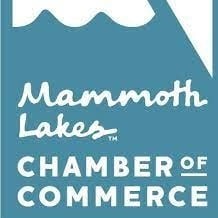Press release
SNARL LECTURE SERIES, MAY 10, 2016
7:00 – 8:00 p.m., Page Center, 1016 Mt. Morrison Rd., Mammoth Lakes
“Understanding Earthquake and Volcanic Hazards in Mono County”
Cynthia Pridmore, Engineering Geologist, Seismic Hazards & Public Outreach,
California Geological Survey and Dr. Margaret Mangan, Scientist-in-Charge, California Volcanic Observatory, United States Geological Survey
Here in the eastern Sierra, we live in true earthquake and volcano country. The public is invited to the free SNARL Lecture Series on May 10, 7:00 – 8:00 p.m., to come learn about earthquake and volcano hazards and information.
Two speakers, Cynthia Pridmore, Engineering Geologist, Seismic Hazards & Public Outreach, California Geological Survey and Dr. Margaret Mangan, Scientist-in-Charge, California Volcanic Observatory, United States Geological Survey will be speaking this evening.
The lecture will be held at the Page Center on the SNARL campus (Sierra Nevada Aquatic Research Laboratory), 1016 Mt. Morrison Rd., Mammoth Lakes and begins promptly at 7:00 p.m. Please arrive 20 minutes early to allow for parking and finding a seat.
Thank you for leaving your dogs at home as no dogs are allowed on the SNARL campus. The lectures are not suggested for young children.
The SNARL Lecture Series runs every Tuesday night throughout May and the topics are based on various local scientific research and interests.
About the Speakers:
Cindy Pridmore has worked at the California Geological Survey (CGS) for 27 years within various programs including mineral resource evaluation, regional geologic and seismic hazards mapping, and public outreach.
A licensed California Professional Geologist and a Certified Engineering Geologist, she holds geology degrees with her B.S. from Cal State Long Beach and an M.S. from San Diego State University.
Cindy is a certified Department of Homeland Security Instuctor/NDPTC and has worked for more than 20 years within the California Geological Survey on the Seismic Hazard Mapping Program producing liquefaction hazard maps and reports primarily for southern California. She works closely with the California Office of Emergency Services for emergency response planning and public outreach for earthquake, tsunami, and volcanic hazards.
In 2014 the California Geological Survey (CGS) and the U. S. Geological Survey (USGS) jointly released a report covering potential earthquake and other seismic hazards of the Long Valley Caldera-Mono Lake region of Mono and northern Inyo counties (USGS Open-File Report 2014-1045, CGS Special Report 233).
The earthquake scenarios presented in the report are intended to be useful for estimating the extent of potential damage, preparing emergency response plans, and providing a framework for an emergency response exercise. Although earthquake scenarios depict potential consequences of significant earthquakes, they are not necessarily the largest or most damaging earthquakes possible.
Cindy’s part of the presentation will provide an overview of the faults within the study and their corresponding earthquake scenarios, with an emphasis on the associated seismic hazards including fault rupture, ground shaking, landslides and liquefaction.
Dr. Margaret Mangan is the Scientist-in-Charge of California Volcano Observatory, one of the five USGS observatories responsible for issuing timely volcano hazard warnings in the US.
Margaret joined the USGS in 1983, moving from her initial posting at USGS headquarters outside Washington D.C. to the Hawaiian Volcano Observatory in 1990, and then in 1998, to the USGS Menlo Park California campus. Margaret holds a PhD in volcanology from Johns Hopkins University.
Throughout her career, she has conducted field, laboratory, and theoretical studies to determine conditions that trigger volcanic eruptions and control eruption intensity. She is Editor-in-Chief of the Journal of Volcanology and Geothermal Research, and is an elected Fellow of the Geological Society of America.
Margaret manages a staff of over 40 scientists and technicians, leads the monitoring efforts at eight potentially hazardous California volcanoes, and works with emergency management authorities at all levels of government. She is a Course Developer and Instructor for the Federal Emergency Management Agency Volcano Crisis Awareness training in California and she has responded to numerous volcanic disturbances in Hawaii, Alaska, California, and the Caribbean.
Dr. Mangan’s talk will provide a “primer” on California’s potentially active volcanoes, with special emphasis on new USGS research in the Long Valley Volcanic Region of eastern California.
Discover more from Sierra Wave: Eastern Sierra News - The Community's News
Subscribe to get the latest posts sent to your email.






















